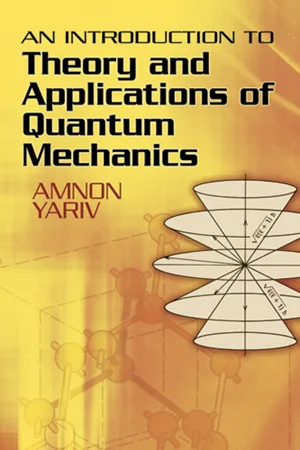![]()
CHAPTER ONE
Why Quantum
Mechanics?
In the late 1800s and early 1900s it was becoming clear that the science of physics was due for a major revision. An increasing number of phenomena and observations failed to be adequately, or even approximately, described by the laws of physics as they were then formulated. Problems arose especially in attempts to provide an explanation for phenomena involving “small” particles such as electrons and atoms and their interaction with electromagnetic fields.
At first these deficiencies in physics were patched by ad hoc hypotheses and postulates. However, as their number grew it became clear that physics needed a complete reformulation, especially the physics of small systems. The result was quantum mechanics—one of the towering intellectual achievements of humankind.
In this first chapter we will place the formal development of quantum mechanics in context by outlining some of the basic results of classical physics. We will then recount some of the phenomena that, historically, defied explanation by classical physics.
1.1 NEWTONIAN MECHANICS AND CLASSICAL ELECTROMAGNETISM
Newtonian Mechanics
In classical nonrelativistic physics particles are assumed to move under the influence of forces. The law describing the motion is
where m is the mass of the particle, F the force, and v the velocity. This law, together with the law of gravitational attraction, for example, proved adequate for describing the motion of heavenly bodies and for predicting accurately the orbits of artillery shells. One important aspect of Newtonian mechanics was its determinism. Once the position and velocity of a particle were specified at some instant of time, and if the forces acting on it were known, then its behavior at all other times was exactly determined.
Electromagnetism
The electric and magnetic fields, E(r, t) and B(r, t), are described in classical electromagnetism by Maxwell’s equations, which in free space and in MKS units take the form1
where c = velocity of light. Using the vector identity ∇ × (∇ × A)=– ∇2A + ∇∇·A plus the fact that in free space ∇ · E = 0, we obtain from (1.2a) and (1.2b)
and a similar equation for B. Equation (1.3) admits solutions of the form
provided
The field (1.4) describes a plane wave propagating with a velocity c along k. A stationary observer will observe the field to oscillate at a frequency v = ω/2π. (The unit frequency is 1 Hz = l cycle/sec.) The wavelength is given by
Classical physics thus provides two formalisms with which to describe natural phenomena. The first—mechanics—deals with particles; the second —electromagnetic theory—deals with radiation waves. The two classes of phenomena were assumed to be distinct but coupled through the Lorentz force equation
which gives the force F exerted on a particle of charge e moving with velocity v in fields E,B.
1.2 BLACK BODY RADIATION
One of the major unsolved problems occupying physicists around the late 1800s and the early 1900s was that of black body radiation. An idealized “black body” is a material that absorbs perfectly at all wavelengths. Many common materials—lampblack, for example—are excellent absorbers over large spectral regions. General thermodynamic arguments have shown that the spectral intensity (watts/m2 per unit frequency interval) I(v) of emitted radiation should be the same for all black bodies at a given temperature. This indeed was found to hold true, and experimental measurements of I(v) yielded the curves shown in Fig. 1.1. The intensity reaches a maximum at some frequency vm while dropping to zero on either side of vm. The frequency vm, as well as the height of the peak, increase with temperature.
Theoretical attempts to predict the behavior of the black body spectral intensity from the then known first principles were unsuccessful until 1900. The application of statistical thermodynamics and the ordinary laws of mechanics and electromagnetic theory led to the so-called Rayleigh-Jeans formula
where k = 1.3807 × 10–23 joule/k is the Boltzmann constant. This law is plotted in Fig. 1.1 and, except for very low frequencies, is in total disagreement with experimental results. The Rayleigh–Jeans law predict...









